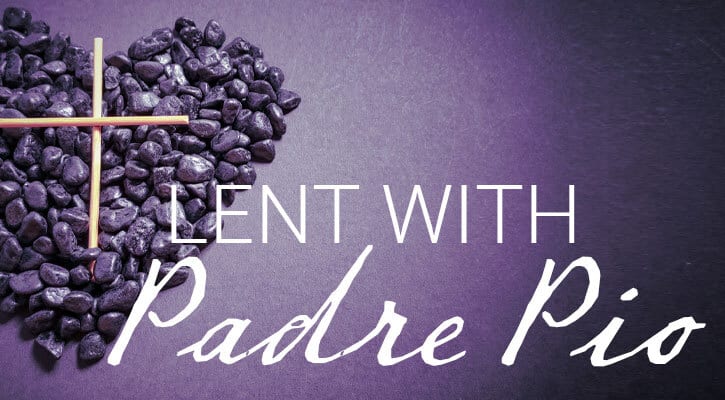Want to find a future saint? Look around you.
Snow shovelers, flight attendants, phlebotomists, kindergarten aides, car mechanics, postal workers, gardeners, cooks, farmers, computer technicians, produce managers, librarians, garbage collectors: They make a lovely litany for the Feast of All Saints!
Sometimes when I get depressed about the folks at the top—the greed-driven executives, the hypocritical leaders, the unethical actions of the supposedly “best and brightest”—I like to think of Tim. Tim’s job wasn’t prestigious. He worked as an aide at a retirement center where my 84-year-old friend Cathy lives. Sometimes I pick her up for a lecture or a concert, because she craves stimulation and loves to get out.
One cold morning when I arrived, Tim greeted me at the door. “Cathy’s got only a light jacket. Do you think she’ll be warm enough?” he asked with concern. “She’s so excited about going. I styled her hair!” Cathy emerged several minutes later, glowing. I complimented her on her hairstyle while Tim retrieved a heavier coat. As he waved us off, I thought no parent had sent a child to prom with more tenderness or pride.
Do we think of Tim as a saint? Probably not. Aren’t saints the folks with lush capes and sculpted halos, glowing through stained glass? Even in martyrdom, their hair is perfectly blow-dried, not one brocade thread of one sleeve askew. They are never overweight, late, anxious or irritable. But such an image does a great disservice to reality. When we put the saints on a pedestal too distant, we’re off the hook. If they were perfect, we don’t need to imitate them!
Saints in Progress
Perhaps the saints are people so drawn to Christ’s vibrant energy that they mirror him, just as long married couples begin to resemble each other. They proclaim what Christ looks like, and there are infinite varieties on the theme.
A statue of St. Benedict that stands beside a lake at the Priory of Christ the King in Schuyler, Nebraska, once startled me into new realizations about sanctity. The saint’s arms are spread wide as the surrounding prairie. He looks up happily, joyous and inclusive. The sunrise seems like a fuchsia banner he tosses into the sky with glad abandon.
His followers, monks who fled Hitler’s Germany, carry on his heritage with reverent liturgy and a beautiful retreat center. St. Benedict changes my image of the saints as dogged followers of rules. Maybe, instead, they are dazzled delighters, who walk through life amazed at God’s wonders. Instead of hounding people about their flaws, they rejoice with gratitude at what is.
In his Rule, St. Benedict wrote, “Each day has reasons for joy.” The saints are the people alert to those hints, eagerly following God’s traces through their days. In her book Friends of God and Prophets, Elizabeth A. Johnson names this the feast of “‘Anonymous,’ whom the world counts as nobodies and whom the Church, too, has lost track of but who are held in the embrace of God who loses not one.”
As Johnson explains, holiness isn’t due to anything human beings have done or earned. Instead, it results from God drawing near to us with an infinite and contagious graciousness. She defines the Communion of Saints: “This is a people shaped by a profound relationship with the Holy One that acts like a deep spring of creative power at their very core.”
In exalting human beings, we are in fact praising God. For this reason Paul addresses all the early Christians as “saints,” even when he gets frustrated with their angry feuding. We can’t define “holy” people as “closer to God” if God is everywhere.
Hearts As Big As the Universe
When I gave a talk on this theme, a woman in the audience protested.
“I was taught that only the priests and sisters are holy,” she said.
“What kind of work do you do?” I asked.
“I help women in the homeless shelter get their GEDs.”
Then a wonderful eruption poured forth from the audience. “What could be more holy than that?” they asked in a splendid demonstration of the community’s power to teach. The lights that came on in the woman’s face could have brightened the whole convention hall.
Mark 12:28-34 records a significant conversation between Jesus and a scribe. We’re inclined to boo at this, because we’re conditioned to see scribes and Pharisees as the villains of the Gospels, so hellbent on enforcing rules that they miss the Messiah. But this encounter is different. What begins in a dispute ends in a compliment. “And when Jesus saw that [he] answered with understanding, he said to him, ‘You are not far from the kingdom of God’” (Mark 12:34).

Later writers (Luke and Matthew) omitted that line because they didn’t want “the enemy” looking so good. Mark may have come closer to understanding Jesus—who delighted in goodness wherever he found it—even among the supposedly clueless.
Along those inclusive lines, it is comforting to know the infinite variety of paths to sainthood. From what we know of canonized saints with feast days, we can infer a lot about the anonymous saints who share the feast on November 1. Some, like Thomas Becket, seem catapulted there by the choices of others: the king who made his old friend head of the Church of England. King Henry II never suspected that Becket’s loyalty would be given to God instead.
For others, like Thérèse of Lisieux, it’s a slow, reflective process: They spend lots of time in prayer and reflection. Courteously and generously, they then share their mystic insights with the rest of us on the same path. Others, like Frances Cabrini, are doers. They don’t have time for long retreats or meditations.
Prayer is almost always an important part of their work, infusing it with energy and compassion. But for the most part, their holiness is expressed in work with the poor, action for peace or social justice, creating art, literature or music. Cabrini once asked God, “Give me a heart as big as the universe!” God must have answered, “O.K.”
Holy Eccentrics
Some come to God thinking (Thomas Aquinas, Edith Stein), teaching (Charles Borromeo), cooking (Martha, patron of chefs), writing poetry (John of the Cross), gardening (Rose of Lima), painting (Blessed Fra Angélico) or acting on stage (Pelagia).
Regardless of each individual path, the final goal is the same: that all achieve a union with God. From that summit, all can look back over their approaches and admire their different twists and turns.
Imagine a heavenly deck where saints admire the view from adjoining rocking chairs. St. Teresa of Avila compares her interior castle to the celestial architecture. St. Elizabeth Ann Seton relaxes because her work is done: Her many children are fed and educated. St. Ignatius leads an imaginative reflection, while St. Hildegard of Bingen sings an original tune.
Within our offices, classrooms or homes are future versions of these great saints. We want to continue honoring that variety there. Would the genius of Francis have flourished in the mold of Dominic? Catherine McAuley or Katharine Drexel couldn’t have done their unique work in a cloister, which many other women chose.
To anyone familiar with the saints’ different personality types and stories, it’s consoling to know that even someone wacky can reach the ultimate goal of human life. The most highly improbable characters arrive in heaven.
As the mystic Gabrielle Bossis wrote: “Don’t think that a saint must look saintly in the eyes of humans. Saints have an outer nature, but it is the inner nature that counts. There is a fruit whose rough—even thorny—skin gives no inkling of its sweet and juicy taste. That is how it is for my saints. Their value is in their hearts” (quoted in Robert Ellsberg’s Blessed Among All Women).
Grace and Guacamole
Perhaps we should celebrate this feast by looking more appreciatively at those around us: saints in disguise or in progress. There we’ll find proof of Thomas Merton’s saying, “To be a saint means to be myself.”
I tried this approach at the Mexican restaurant down the street, which has an assembly-line approach to building burritos. The ladies behind the counter load on beans and guacamole, sour cream or cheese. It’s the repetitive kind of work that would drive me up the wall within two hours, but the ladies are unfailingly gracious. They smile as they ladle the salsa with a generous hand, and we communicate with our eyes more than with words in different languages.
Their grandmothers, presiding over steamy stoves, may have taught them that food prepared with love warms the soul as well as the body. Was that the glimmer of a halo along the line? Could those drab uniforms be the garments of holiness? Maybe there’s more than fajitas in the making here.
Stand back and admire saints in the works!








4 thoughts on “The Feast of All Saints: God’s Glorious Nobodies”
what a wonderful look at Sainthood, certainly opened my eyes to a different view. I pray God will help me to continue to look as mentioned in this reflection.
A beautiful message, and absolutely True🙏💛
The beautiful ‘mural’ in the Cathedral of the Angels in Los Angeles comes to mind. Named saints and ‘nobodies’ all processing together along the wall towards the altar. Very moving, as is this lovely reflection on what holiness truly means. Thank you.
What a beautiful reflection on the call to Holiness in the ordinary, and the people we encounter everyday of our lives!
All you Holy Saints, pray for us!